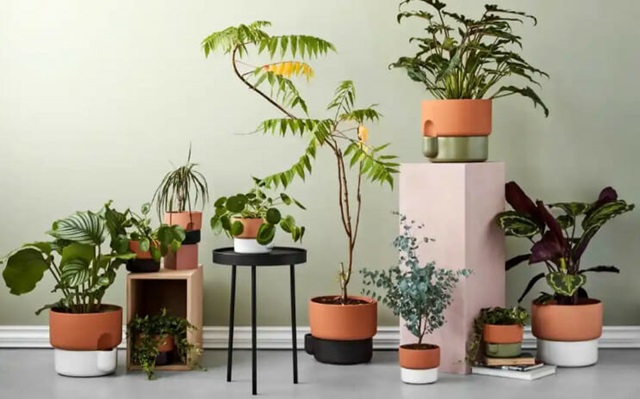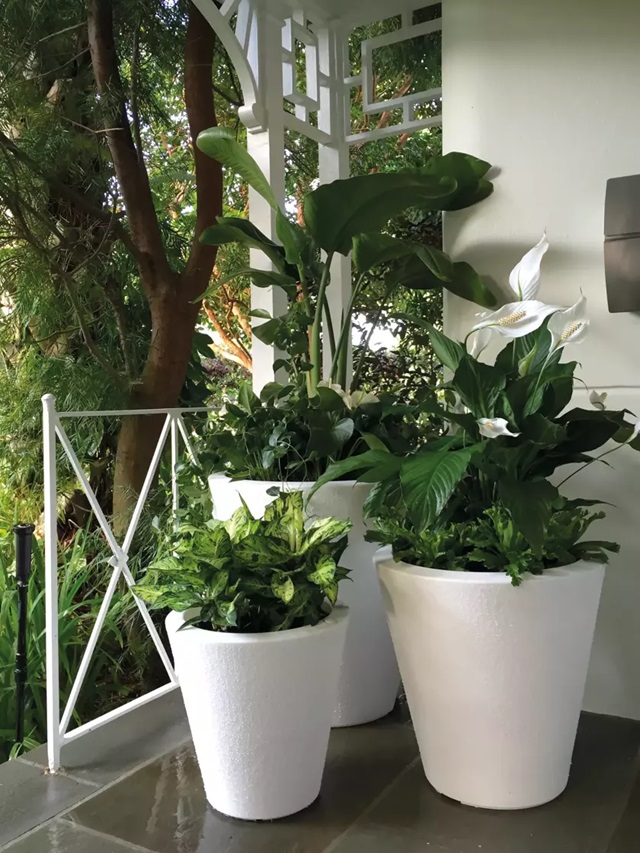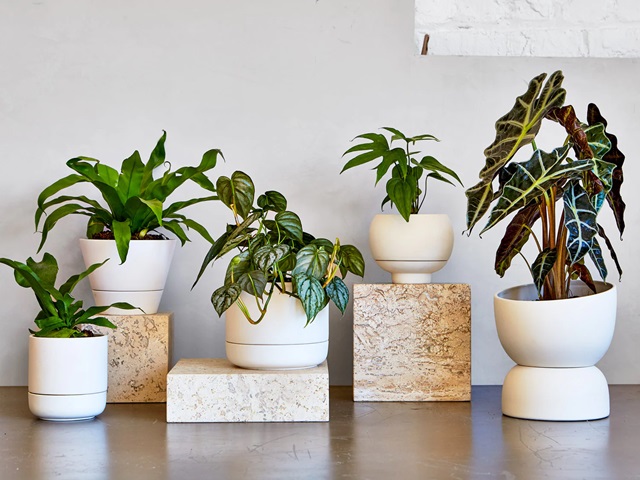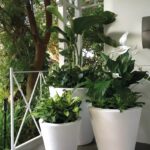Whether you’re a plant enthusiast or a gardening beginner, it’s no secret that to take good care of plants you must get your hands dirty. We’ve all been there – the inconvenient watering routines that either result in too much or too little hydration, the constant worry of whether we’re under or overwatering our plants, or simply just forgetting to water our leafy companions.

What Is a Self-Water Pot?

The innovation of the self-water pot has become a game-changer in the world of plant maintenance. What’s more, self-watering planters offer plant lovers many benefits when it comes to gardening.
What Are the Benefits of Self-Watering Pots?
- Simple Plant Care: Self-watering pots maintain consistent soil moisture levels, making sure that your plants receive the right amount of hydration. This makes plant care easier for those with busy schedules or little plant care experience.
- Stop Overwatering and Underwatering: These pots are designed to deliver the right amount of water to the plant’s roots. They prevent overwatering, which can cause the root to rot, or underwatering, which can lead to dehydration. Your plants will stay healthy and hydrated.
- Soil Moisture: Self-watering planters create the ideal moisture environment for your plants, ensuring they have access to water without drenching the soil. This is particularly necessary for plants with specific moisture requirements.
- Reduce Water Waste: Traditional watering methods can lead to excess water runoff, resulting in water waste.
- Extended Watering Intervals: Self-watering pots can keep your plants hydrated for longer periods without needing frequent watering. Useful for people who travel or have a busy schedule, as it reduces the need for constant attention to plant care.
- Healthy Root Growth: With a consistent water supply, these pots promote healthy root growth. Roots are likely to grow deeper into the soil, making plants more resilient and less prone to drought.
- Plant Growth: The controlled and consistent moisture levels in self-watering pots can lead to enhanced plant growth, resulting in greener, more vibrant, and larger plants.
- Indoor and Outdoor Use: Suitable for both indoor and outdoor plants and can be used for a wide range of plant varieties, from houseplants to patio garden plants.
- Improved Plant Survival Rates: The consistency and reliability of self-watering pots make them an excellent choice for beginners and those prone to forgetting to water their plants, ultimately leading to improved plant survival rates.
The Different Types of Self-Watering Pots
Self-watering pots come in two main categories: traditional self-watering planters and smart self-watering pots. Let’s take a look at the characteristics of each type.
Traditional Self-Watering Pots
Traditional self-watering pots feature a two-part design consisting of an outer pot and an inner pot or insert. The inner pot, where the plant is placed, contains a water reservoir at the bottom. Plus, these pots use a wicking system to draw water from the reservoir into the soil. A wick, which can be a fabric strip or a porous material, extends from the soil into the water reservoir, allowing the plant’s roots to absorb water as needed.
Traditional pots are relatively straightforward in design and operation. They don’t require any electrical components or connectivity to devices. They are easy to use and are low maintenance. Refilling the water reservoir as needed is the primary maintenance task. Traditional self-watering pots are suitable for a wide range of plants, from indoor houseplants to outdoor container gardening. They provide an excellent balance of moisture.
Smart Self-Watering Pots
Smart self-watering pots are equipped with technology that allows them to connect to smartphone apps or other devices. They often have sensors that monitor soil moisture levels, light conditions, and even temperature. These pots enable automated control of watering. The app can be programmed to deliver water according to specific schedules or based on real-time sensor data.
Users can customize watering schedules and receive notifications or alerts when it’s time to refill the water reservoir or take other actions. Also, smart self-watering pots provide real-time data on soil moisture and other environmental factors. Some smart pots come with additional features, such as compatibility with voice assistants like Amazon Alexa or Google Assistant, making it possible to control plant care using voice commands.
Choosing Between Traditional and Smart Self-Watering Pots

The choice between traditional and smart planters depends on your preferences and needs.
For example, traditional pots are perfect for people who prefer a simple, low-tech solution and don’t have the option to monitor them remotely. They are suitable for a vast range of plants and are easy to use. On the other hand, smart pots are a great choice for tech-savvy people who want precise control over plant care and real-time monitoring.
The choice between these two types of self-watering pots depends on your level of involvement and the specific needs of your plants. Both types offer the advantage of consistent and efficient plant hydration. With self-watering pots, your plants receive just the right amount of moisture they need, when they need it. The result is effortless plant care, even for those with hectic schedules or limited plant care experience.






















